

Senscore.org is another website that provides their own sensor and lens ratings and testing similar to DxOMark. Here are the best Nikon DSLR cameras according to their tests (click to enlarge):
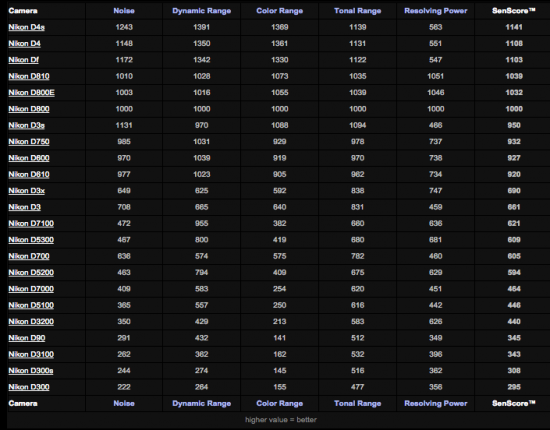
For comparison, the best Nikon DSLR cameras according to DxOMark:
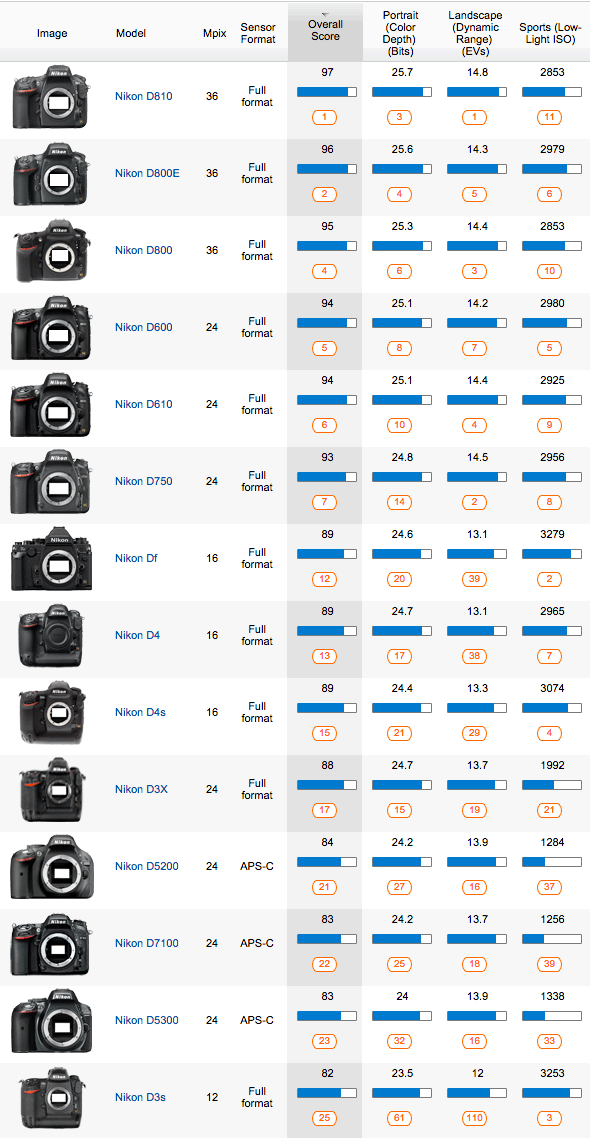
The top 10 tested cameras according to SenScore:

Top 10 tested cameras according to DxOMark:
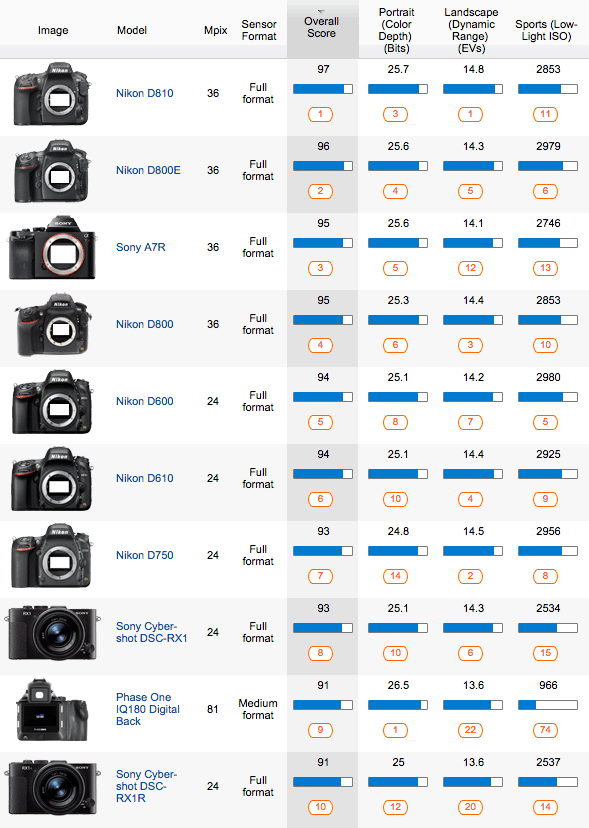
The best Nikon lenses according to LenScore:
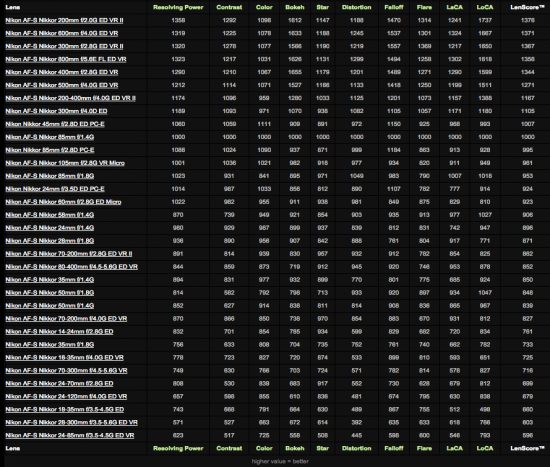
The best Nikon lenses according to DxOMark:
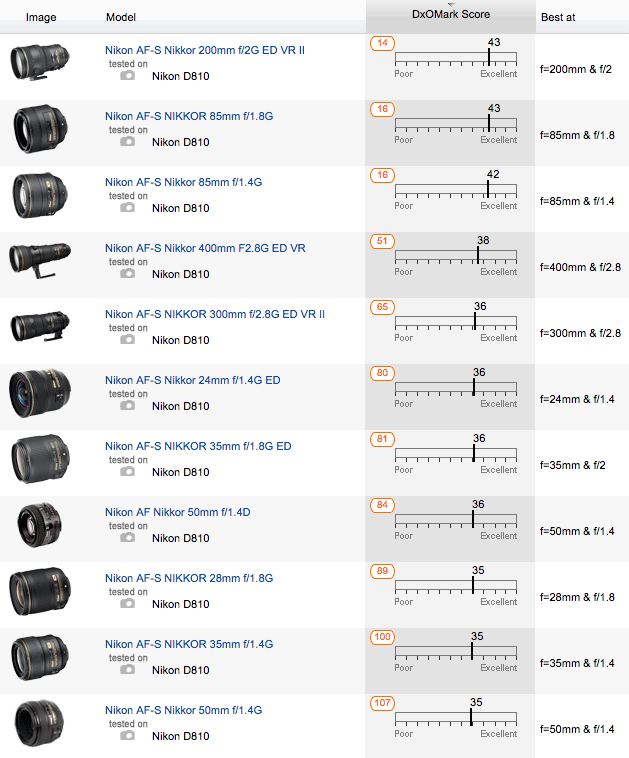
Some of the Q&A taken from their website:
How does SenScore differ from other sensor ratings?
Most sensor ratings represent the image quality of a sensor under ideal conditions, i.e. base ISO, which is very important and useful for selecting a camera for studio use. However, most cameras do not stay in a studio or on a tripod all the time, they are taken to every conceivable dark and challenging corner of the world, and most of the time, they are used to take images under less than ideal conditions. So for selecting a camera for street photography or shooting concerts, for sports and family and the great outdoors, or maybe for a year of backpacking around the globe, SenScore™ is more useful, because it is indicative of a camera’s image quality under a wide range of real-world conditions. Also, we think that resolving power is very important and must be taken into account when rating a digital camera sensor.
Why is the score of the D3x so low?
While being able to produce outstanding images at base ISO, the D3x’s image quality rapidly diminishes with higher ISO settings.
How can the D4s beat the D800E?
The D800E offers far superior resolving power (best of all cameras tested) and is able to provide better image quality than the D4s under favorable conditions. However, dynamic range, tonal range and color range drop off significantly with higher ISO settings while the D4s holds up astonishingly well. The break-even point is below 400 ISO, at 400 ISO the D4s is already marginally ahead.
This is how SenScore is calculated:
SenScore is a rating system for digital camera sensors. It is based on the performance of a sensor at all available ISO settings within the 100 to 25600 range as well as the sensor’s resolving power across this range. The score is indicative of a camera’s image quality across a wide range of real-world conditions. However, the score does not take into account a camera’s speed, buffer size, AF, metering, build quality etc. and is therefore not a camera rating. The score is calibrated based on the Nikon D800 measurements, i.e. the D800 is the reference with a score of 1000 in each category. Measurements are based on raw files. JPEG engine performance is not part of SenScore™. Video performance is not part of SenScore™.
Nikon F-mount cameras are measured with: Nikon AF-S Nikkor 85mm f/1.4G
The overall score ( = SenScore™ ) is the average of the following 5 scores:
Noise
The amount of noise added by the sensor and AD conversion process.Dynamic Range
The ratio between the lowest amount of light a sensor is able to detect and the amount of light that pushes the sensor into saturation. Not to be confused with tonal range. A sensor with a 4-bit readout able to distinguish only 16 levels of lightness could theoretically have a very high dynamic range. We measure the dynamic range of a camera sensor with a custom built device for which we are in the process of seeking patent protection.Color Range
The number of colors a sensor is able to distinguish.Tonal Range
The number of lightness levels a sensor is able to distinguish. The imaginary 4-bit sensor mentioned in the Dynamic Range section offering an extremely high dynamic range would score very low on tonal range.Resolving Power
Amount of detail a sensor is able to record. The lens plays an important part in this. All F/EF/A/E mount cameras are measured with the same F/EF/A mount lenses. The 3 lenses used for SenScore™ measurements never leave the lab and are used strictly for this purpose. There is variation in lenses. The F/EF/A mount lenses used for SenScore™ measurements have been carefully selected for their performance.







